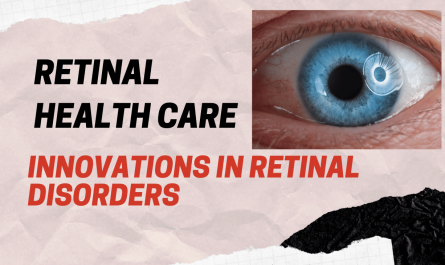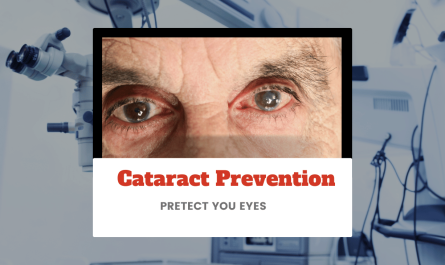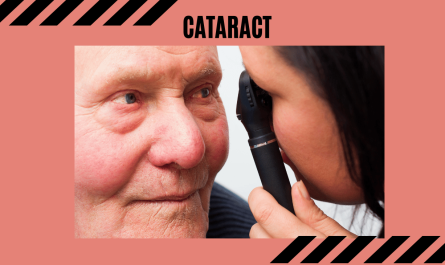Introduction
When it comes to eye health, understanding the difference between Glaucoma and Cataract is crucial. While both are common causes of vision loss, they are fundamentally different in nature, cause, and treatment. With growing awareness about eye diseases, it’s important to educate yourself on these conditions so that you can identify early symptoms and seek appropriate care. In this blog, we will explain what Glaucoma and Cataracts are, their causes and symptoms, available treatments, and how expert consultation can help.
Understanding the Basics of Glaucoma vs. Cataract

What is Glaucoma?
Glaucoma is a group of eye diseases that damage the optic nerve, often due to increased pressure inside the eye (intraocular pressure). If left untreated, it can lead to irreversible vision loss.
What is a Cataract?
A cataract occurs when the eye’s natural lens becomes cloudy, usually due to aging. This cloudiness blocks light from passing clearly through the lens, resulting in blurred vision.

Types of Glaucoma:

- Open-angle Glaucoma: Most common form; develops slowly.
- Angle-closure Glaucoma: Sudden rise in eye pressure; a medical emergency.
- Normal-tension Glaucoma: Optic nerve damage without high eye pressure.
- Congenital Glaucoma: Present at birth due to abnormal eye development.
Types of Cataract:
- Nuclear Cataract: Affects the center of the lens; often caused by aging.
- Cortical Cataract: Wedge-like opacities around the edge of the lens.
- Posterior Subcapsular Cataract: Affects the back of the lens; develops faster.
- Congenital Cataract: Present at birth or develops during childhood.

Are Cataracts and Glaucoma Related?

While cataracts and glaucoma are distinct eye conditions, they can sometimes be related, particularly in older adults. Both tend to develop with age, and it’s possible for a person to have both at the same time. Additionally, certain types of glaucoma can increase the risk of cataract development, and cataract surgery may influence eye pressure, potentially affecting glaucoma. However, they affect different parts of the eye—glaucoma targets the optic nerve, while cataracts affect the lens. Understanding how they can coexist is important for effective diagnosis and treatment planning.
Blindness: Glaucoma vs. Cataract
Glaucoma is one of the leading causes of irreversible blindness worldwide. It often has no early symptoms, making it particularly dangerous. Once vision is lost, it cannot be recovered. In contrast, cataract-related blindness is usually reversible. Surgery can restore vision effectively in the vast majority of cases. Early detection and proper management are critical for both conditions to prevent permanent vision impairment.
Causes, Symptoms, and Concerns Glaucoma vs. Cataract
| Aspect | Glaucoma | Cataract |
| Causes | Increased intraocular pressure, family history, age, diabetes, trauma | Aging, UV radiation, smoking, diabetes, eye injury |
| Symptoms | Slow peripheral vision loss, eye pain, halos around lights, nausea | Cloudy or blurred vision, glare, faded colors, poor night vision |
| Common Concerns | Often asymptomatic until advanced, irreversible damage | Can be corrected with surgery, usually progresses slowly |
Treatment Options
Before diving into treatment details, it’s important to note that both cataract and glaucoma require personalized care. The right treatment plan depends on the severity, symptoms, and individual health conditions. Consulting an ophthalmologist is essential for effective management.
Glaucoma Treatment:
- Eye drops to reduce eye pressure
- Oral medications
- Laser therapy (Trabeculoplasty)
- Surgery (Trabeculectomy, Drainage implants)
Cataract Treatment:
- No medication or eye drop can cure cataract
- Cataract surgery is the only effective treatment
- Replacing the cloudy lens with an artificial intraocular lens (IOL)
Expert Tips and Insights
- Regular eye exams are key to early detection.
- Family history plays a role in Glaucoma; early screening is important.
- Wearing UV-protective sunglasses may help delay cataract formation.
- If you experience any sudden vision changes, consult an ophthalmologist immediately.
Book a Consultation with the Experts
Laxmi Eye Hospital is one of the largest chains of eye hospitals in Mumbai, known for excellence in eye care for over 30 years. With highly experienced doctors and a commitment to transparency in treatment, the hospital provides world-class diagnostics and advanced care for Cataract, Glaucoma, Lasik, Retina issues, and more.
Why Choose Laxmi Eye Institute?
- Internationally recognized
- Affordable and comprehensive care
- State-of-the-art infrastructure
- Highly reputed cataract surgical training program
Our Specializations:
- Specs Removal / LASIK (Bladeless LASIK, ICL, IPCL, Contoura Vision LASIK)
- Cataract & Glaucoma Treatment
- Diabetic Eye Care
- Cornea Clinic
- Retina Treatment
- Pediatric Ophthalmology
Clinic Locations:
- Dombivli: 1st Floor, Laxmi Eye Institute, SS Business Park, Gharda Circle
- Kharghar: Office 108-110, Anant CHS, Plot 31, Sector 04
- Panvel: Mulla Hamid Rd, Old Panvel
- Kamothe: Shop No 26/27, Near ICICI Bank, Sector 34
Book an Appointment Today! Visit our website or call your nearest center to schedule a consultation.
FAQs
1. Can Glaucoma and Cataract occur together? Yes, it’s possible to have both conditions at the same time, especially in older adults.
2. Is vision loss from Glaucoma reversible? Unfortunately, no. Glaucoma causes permanent damage, which is why early detection is critical.
3. Can Cataract surgery cure Glaucoma? No, but cataract surgery can sometimes help lower eye pressure. Glaucoma requires separate treatment.
4. What age group is most affected by Cataracts? People over the age of 60 are most commonly affected by cataracts.
5. How often should I get an eye checkup? It’s recommended to have a comprehensive eye exam every 1-2 years, especially after age 40.
6. Are there any preventive measures for Glaucoma? Regular eye checkups, managing chronic diseases, and avoiding eye injuries can help reduce the risk.
7. Is Cataract surgery painful? No, it is usually a quick and painless procedure performed under local anesthesia.
8. Are there side effects of Glaucoma medication? Some patients may experience redness, irritation, or changes in pulse rate; always consult your doctor.
Conclusion
While Glaucoma and Cataract both affect vision, understanding their differences is essential for timely treatment. Glaucoma is a silent vision thief, often going unnoticed until it’s too late. Cataract, on the other hand, is easily detectable and treatable with surgery. Regular eye exams and professional guidance can help maintain your vision health. Don’t wait for symptoms—prioritize your eye care today.
Book your consultation with Laxmi Eye Hospital and take the first step toward clearer, healthier vision.




